Blog
"Mistaken for a Maniac"
Indianapolis Leader, January 7, 1882, p4. How would it feel to be removed from recognizable surroundings and held in confinement due to a lack of being able to communicate? Not allowed to explain, not allowed to leave. That is what happened for William Knapp of Indianapolis, a German who was wrongly arrested and taken to Central State Hospital. According to the article, he made repeated attempts to express he was not the right man, but each time the confrontation escalated until he was bound with ropes. Then, when the arresting officers brought him to Central State, it was discovered that he was the wrong man and was eventually released. Due to a lack of being able to communicate, drastic measures...
Rates of Women's Incarceration 1910-2014
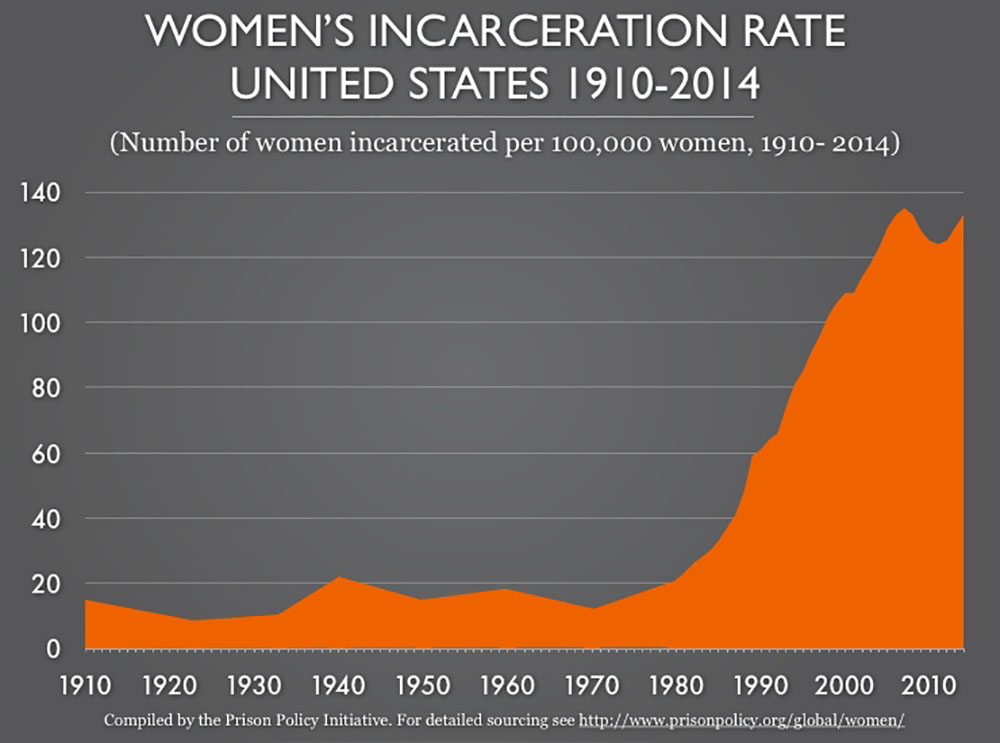
This graph, published by the Prison Policy Initiative, displays the increased rate of women’s incarceration in the United States between 1910 and 2014. While only five percent of the world’s women live in the United States, nearly thirty percent of the world’s incarcerated women are here (Kajstura and Immarigeon 2015). The number of incarcerated women is growing at staggering rates. In 1980, about 13,000 women were incarcerated in federal and state prisons combined. In 2010, there were 205,000 women overall in prison or jail (Mauer 2013, p. 9). The female population in American jails, specifically, increased by 48% between 1999 and yearend 2013, while the male population increased by 17% during the same time frame (Minton et al. 2015). Between...
Racial Disparity in Massachusetts Prisons
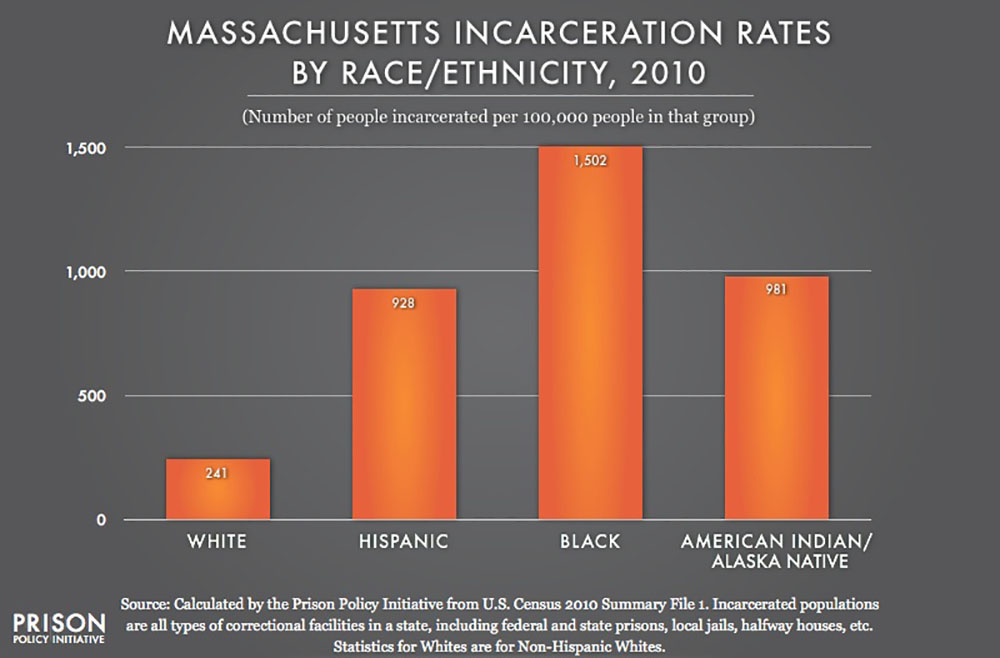
The Prison Policy Initiative finds that black, Latino, and Native American/Alaska Native Americans are overrepresented in Massachusetts prisons and jails, while white Americans are underrepresented. In the 2010 census, while whites constituted 64% of the United States population, they constituted 39% of the nation’s incarcerated population at a rate of 450 per 100,000 (Sakala 2014). This graph depicts incarceration rates by race/ethnicity in Massachusetts based on the 2010 census. The rate for African Americans stands at a striking 1,502 people incarcerated per 100,000. This is over 6 times higher the rate for whites in the state. This graph, along with the Prison Policy Initiative’s briefing report “Breaking Down Mass Incarceration in the 2010 Census: State-by-state Incarceration Rates by Race/Ethnicity,” shows...
Her Story in the Carceral State: Reproductive Justice and Mass Incarceration
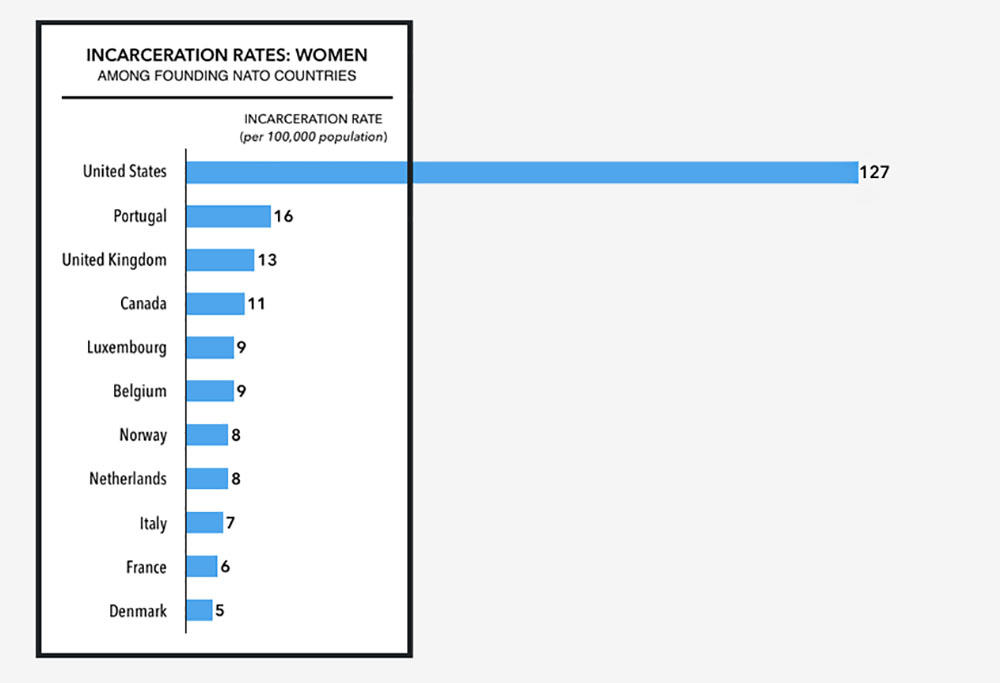
UMass’s contribution in the HAL project explores mass incarceration in a historical context, and particularly how it relates to gender and Reproductive Justice. Massachusetts has the dubious historical distinction of having one of the first women’s prisons, the Massachusetts Reformatory for Women, as it was called when built in 1877.
The digital team decided to look through the lens of contemporary activism focused on gender and Reproductive Justice within the carceral state. Our goal with this project was to curate images and video that would help amplify the voices of people with lived experience in prison policy activism. By utilizing our platform as graduate students and HAL collaborators, we hope to shed light on some of the...
The Changing Tide in the Re-Enfranchisement of Felons
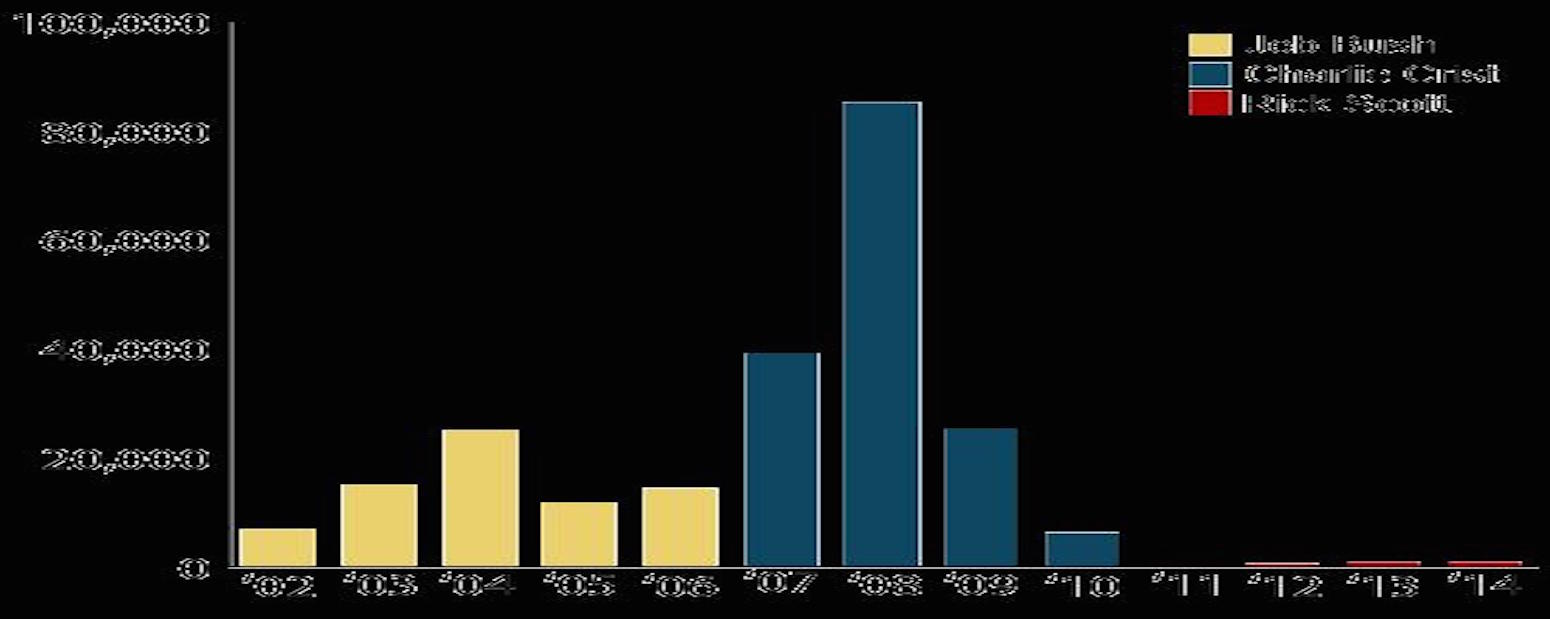
After being convicted of a felony, individuals lose many rights of citizenship, including the right to vote; the right to sit on a jury; the right to possess firearms; the ability to travel abroad to some countries; certain employment opportunities; access to food stamps, public housing, and other social services; and often parental benefits. Felons are paradoxically rightless citizens in that they are beholden to the nation, but cannot enjoy the benefits.
After Kentucky Governor Steven L. Beshear ordered the automatic re-enfranchisement of ex-felons in November 2015, only Iowa and Florida permanently ban all persons with felony convictions from voting. While some states restore rights immediately following release from prison, most require convicts to complete parole and probation before...
Upon Re-Entry
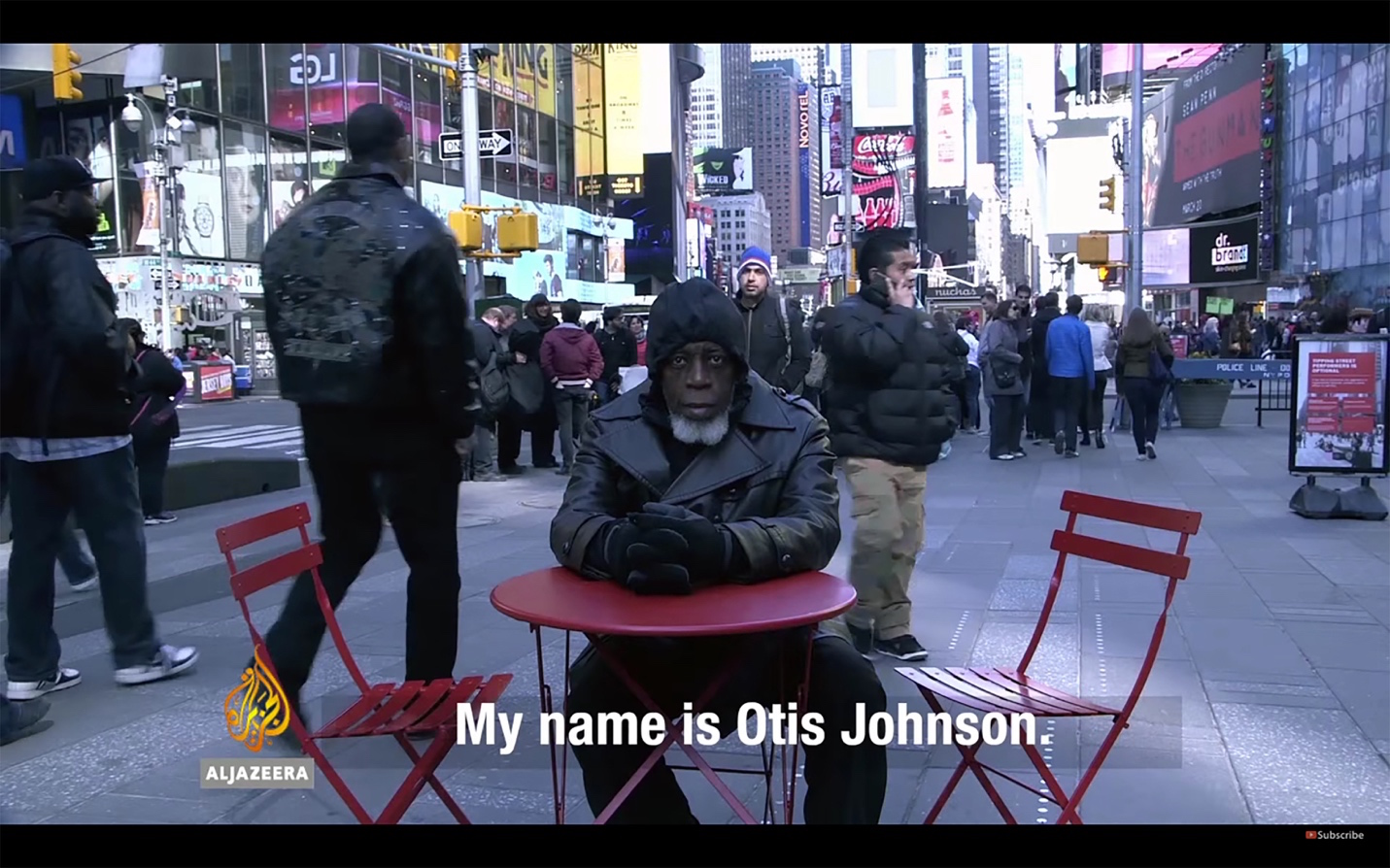
After 44 years in prison, 69-year-old Otis Johnson recalls the challenges of re-entry in a video posted by Al Jazeera.com. Johnson was incarcerated at the age of 25 for the crime of attempted murder on a police officer.
According to Al Jazeera, Johnson relies on Fortune Society , a nonprofit organization that provides housing and services to ex-prisoners in New York City. His incarceration wasn’t limited to the jail cell -- his imprisonment has affected all areas of his life. He lost all contact with family members and friends, making his re-entry that much harder. This video makes apparent how disconnected inmates are from outside society during their time in prison. After years of isolation and...
Julian of Norwich: A Voluntary Prisoner

Written by - Nico Sedivy
In contemporary America, we associate voluntary imprisonment mainly with acts of civil disobedience, meant to demonstrate and protest injustice. However, in medieval Europe, pious individuals would willingly confine themselves to small, solitary cells in churches to spend their time in prayer, religious study, and contemplation. These people were called anchorites, if men, and anchoresses, if women. One anchoress in England was Julian of Norwich.
NAMI Indiana on Education
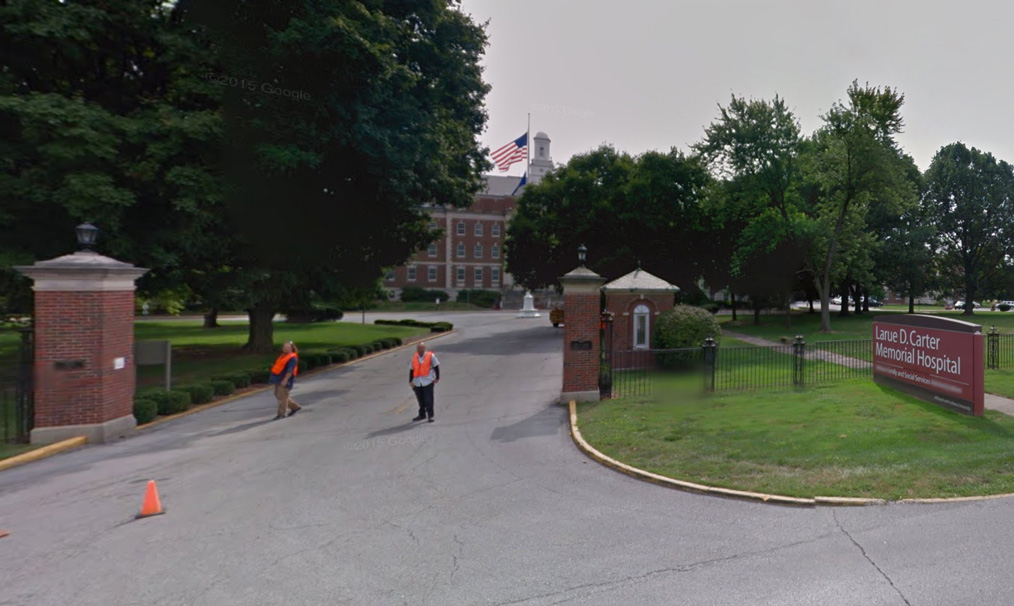
Marianne Halbert, J.D. and Linda Williams talking about NAMI’s main focus on educating groups about mental illness. Marianne Halbert is the Criminal Justice Director for NAMI Indiana and Linda Williams is the Program Coordinator for NAMI Indiana. This section was taken from a longer interview with four individuals who are apart of NAMI Indiana.
Bejeweled and Bedazzled: Skeletons of Christian Martyrs
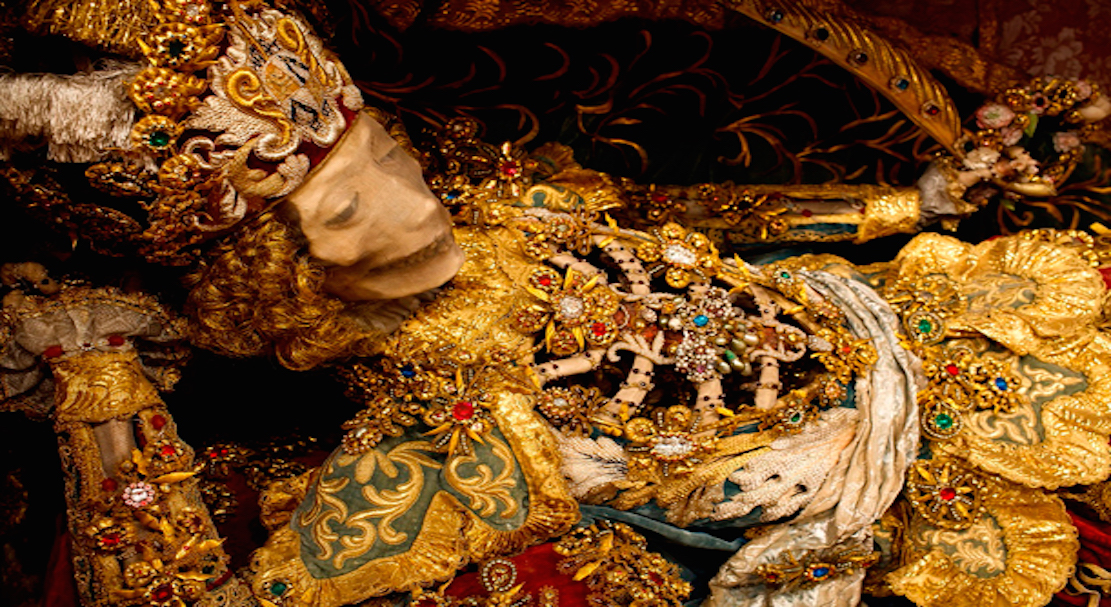
Written by - Maria Camila Arbelaez
Skeletons of Christian bodies were martyred during Roman times and then discovered and made relics by members of the the Catholic Church throughout Europe in the 16th and 17th centuries. This elevation of the skeletons represents an enduring testament to the immortality and auspiciousness attributed to Christians that were captured and killed by the Roman Empire. The so called “catacomb saints" were found in Italy’s catacombs, where thousands of Christian and Jewish bodies were left during times of religious intolerance. A tradition was thus created in which the skeletons were cared for and intricately decorated with the finest jewels and royal garb of the time. The Vatican would determine whether a skeleton was...
Colonization and Slave Dungeons in Ghana

Written by - Maria Camila Arbelaez
This is a video of CNN coverage of Obama visiting Cape Coast Holocaust Dungeons in Ghana, a site where enslaved Africans were stored before shipment to the New World to be exploited in the endeavors of colonization. The sight of the first interaction between the United States and Africans. The dungeon structure functions as a jail giving way to the larger prison that enslaving nations became for blacks, and these particular dungeons are one of the biggest in existence. Michelle Obama traces her ancestry to slaves, and slave owners, both the abusers and the abused in this complicated system. Obama speaks of the difficulties, emotions, and enduring social messages that the act of...
- ‹ previous
- 2 of 5
- next ›